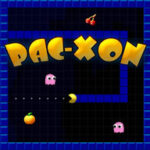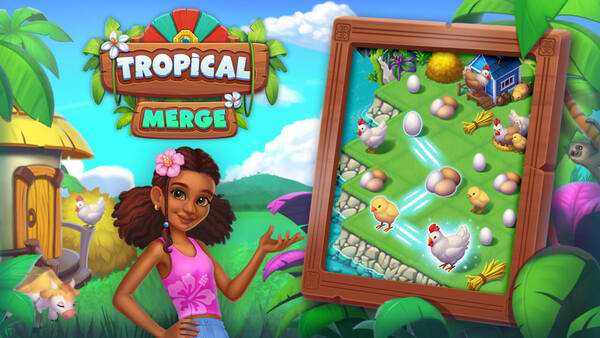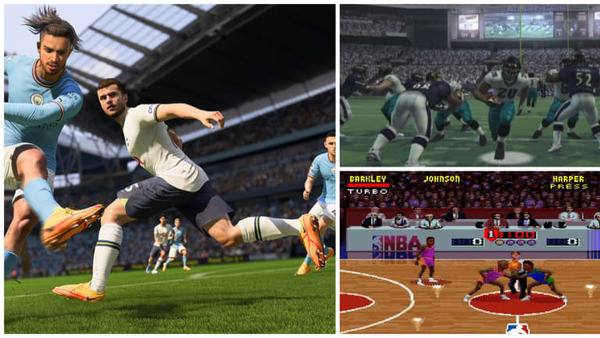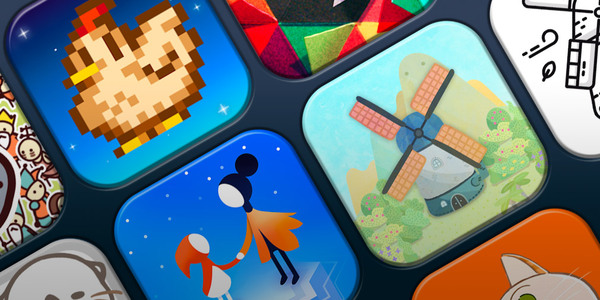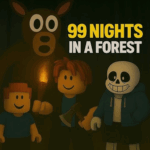Fall Guys, developed by Mediatonic and published by Devolver Digital (later acquired by Epic Games), burst onto the gaming scene in August 2020 with a refreshing take on the battle royale genre. Rather than intense gunfights or survival mechanics, Fall Guys offered chaotic, whimsical obstacle courses filled with jellybean-shaped characters bouncing, stumbling, and diving toward victory. Its colorful aesthetic, infectious charm, and accessibility quickly made it a cultural sensation. While many games focus on raw competitive edge, Fall Guys thrives on lightheartedness and luck, making it enjoyable for players of all skill levels. In this in-depth analysis, we’ll explore how Fall Guys evolved from an indie darling into a free-to-play global hit, its core mechanics, seasonal innovations, monetization strategy, community involvement, and where it stands today in a crowded gaming market.
The Birth and Initial Hype
Fall Guys was developed by a small team at Mediatonic, inspired by TV game shows like Takeshi’s Castle and Wipeout. The concept was to bring a party-style multiplayer experience into the battle royale format. Instead of weapons and shrinking zones, players would face a series of absurd mini-games in a knockout-style competition until one winner remained. The timing of its release couldn’t have been better. In the midst of global lockdowns during the COVID-19 pandemic, players were hungry for cheerful, easy-to-play games that offered social interaction. Fall Guys launched on PlayStation 4 and PC and was an immediate hit, especially as it was available for free to PlayStation Plus subscribers. Twitch streamers and YouTubers flocked to the game, boosting its visibility and sparking viral interest.
Core Gameplay Mechanics
Fall Guys supports up to 60 players per match, each competing in a series of randomly selected mini-games. These games are divided into four main categories: race, survival, team, and final. Each round eliminates a number of players until a small group faces off in a final round to determine the winner. Controls are simple—players can run, jump, dive, and grab—yet mastering the physics-based movement and anticipating chaotic interactions adds layers of depth. Random elements like swinging hammers, rotating platforms, and flying fruit keep each match unpredictable and exciting. While the game appears casual on the surface, skilled players learn optimal paths, timings, and strategies for each map. Fall Guys rewards persistence and creativity over sheer mechanical skill, making it accessible but also rewarding for those who study the game.
The Visual and Audio Experience
One of Fall Guys’ standout features is its vibrant and cartoonish aesthetic. The colorful environments, slapstick animations, and expressive character costumes create an atmosphere of light-hearted fun. Each level feels like a candy-colored obstacle course, with whimsical designs and bouncy physics that enhance the chaotic appeal. The soundtrack, composed by Jukio Kallio and Daniel Hagström, blends upbeat electronic music with dynamic cues that match the pace of gameplay. Sound effects—like the boing of trampolines or the thud of falling—are satisfying and comical. Costume customization adds another layer of personality. Players can mix and match skins, patterns, and colors to express themselves, turning each bean into a unique character. The visual clarity, combined with intuitive design, ensures players always know what’s happening even in the most hectic situations.
Seasonal Updates and Content Expansion
Mediatonic structured Fall Guys around a seasonal update model, with each season introducing new themes, levels, and cosmetics. From medieval castles in Season 2 to futuristic circuits in Season 4, each update expanded the game’s universe and introduced fresh mechanics. Seasonal challenges and events encouraged regular play and rewarded dedicated players with exclusive items. Over time, the developers added features like squad mode, cross-play, custom lobbies, and limited-time shows with curated playlists. These enhancements kept the game feeling new while maintaining its core appeal. Despite initial content droughts after launch, Mediatonic significantly ramped up its output and communication post-acquisition by Epic Games. The transition to a free-to-play model in 2022 introduced a Battle Pass system, similar to Fortnite, allowing players to progress through levels by earning experience from matches and daily challenges.
Transition to Free-to-Play and Platform Expansion
In June 2022, Fall Guys officially relaunched as a free-to-play title under Epic Games’ guidance. This shift was accompanied by a massive expansion in platform availability. The game launched on Xbox, Nintendo Switch, and the Epic Games Store, while existing PlayStation and Steam users retained access. The free-to-play model introduced a new in-game currency system, including Kudos (earned through gameplay) and Show-Bucks (purchasable currency). Players could unlock cosmetics through both free and premium tiers of the Battle Pass. This transition greatly increased the player base and revitalized interest in the game. Cross-platform play and cross-progression were implemented, allowing seamless gameplay across devices. Although some longtime players expressed concerns about monetization, the move successfully opened Fall Guys to a broader global audience.
Monetization and Cosmetic Economy
Fall Guys monetizes through its Battle Pass, premium skins, and in-game shop rotations. Players can purchase Show-Bucks to unlock costumes, emotes, and banners. Epic Games also began collaborating with popular franchises for limited-time skins, including Sonic the Hedgehog, Doom, Cuphead, and even Godzilla. These partnerships attracted attention and added appeal without affecting gameplay fairness. The Battle Pass offers two tracks: a free tier with basic rewards and a premium tier with exclusive cosmetics. While all microtransactions are cosmetic, the game does encourage spending through FOMO-based design. Items are often time-limited, and premium skins tend to be elaborate and desirable. Compared to many free-to-play games, Fall Guys maintains a relatively fair economy, but some players miss the original model where most costumes were earnable through gameplay alone.
Competitive Play and Skill Expression
Although Fall Guys isn’t traditionally seen as a competitive game, there is a skill component that becomes apparent with experience. Knowing the best routes, how to exploit level mechanics, and mastering movement gives certain players an edge. Custom lobbies and tournaments have emerged, often organized by content creators and the community. Fall Guys also hosted official esports-style events, including Twitch Rivals and Fall Guys Fridays, though the chaotic nature of the game makes consistent competition challenging. The randomness of mini-games and unpredictable physics add excitement but limit the ability to rely on skill alone. Still, high-level players often display incredible map knowledge, timing, and adaptability, showing that while luck plays a role, skill matters. Squads mode allows players to team up with friends, and ranked-style shows could be a possibility in the future as the game matures.
Community, Culture, and Influence
Fall Guys has fostered a passionate and creative community. Fan-made content, including memes, artwork, and machinima-style videos, have kept the game culturally relevant. The developers maintain a humorous, self-aware tone on social media, engaging with fans and responding to feedback. Community-driven events like costume design contests and creator spotlights show Mediatonic’s appreciation for its player base. Fall Guys also inspired other games to experiment with non-violent, physics-based competition. Titles like Stumble Guys and Party Animals owe part of their design ethos to Fall Guys’ success. The game’s family-friendly tone and simple mechanics have made it a favorite among players of all ages. Streamers and content creators played a pivotal role in the game’s growth, and the vibrant visual style continues to make Fall Guys appealing for spectators.
Conclusion:
Fall Guys proves that multiplayer competition doesn’t have to be aggressive or intimidating. With its vibrant colors, whimsical characters, and unpredictable obstacle courses, it carved a niche that few others have explored. Its impact is evident in the number of games that have tried to replicate its success, but none have matched its blend of hilarity and heart. Whether you’re playing to win or just to laugh with friends, Fall Guys offers a consistently entertaining experience. The game has evolved significantly since launch and continues to grow under the Epic Games banner. As the developers refine its systems and introduce new ideas, Fall Guys is poised to remain a staple in the casual multiplayer scene for years to come. In a world filled with intense shooters and dark narratives, Fall Guys is a reminder that sometimes, falling down can be the most fun part of the game.

 99 Nights In The Forest Roblox
Among the wave of horror-themed survival games on Roblox, 99 Nights In The Forest carves out a unique place by combining psychological tension, environmental dread, and strategic multiplayer gameplay. Set in a cursed forest where players must survive 99 increasingly intense nights, this game delivers a blend of crafting, cooperation, base-building, and fear.
Read full review
99 Nights In The Forest Roblox
Among the wave of horror-themed survival games on Roblox, 99 Nights In The Forest carves out a unique place by combining psychological tension, environmental dread, and strategic multiplayer gameplay. Set in a cursed forest where players must survive 99 increasingly intense nights, this game delivers a blend of crafting, cooperation, base-building, and fear.
Read full review
 Roblox – Steal a Brainrot
Roblox – Steal a Brainrot is one of the most hilariously chaotic and strategic games to hit the Roblox platform. Combining stealth mechanics with absurd humor, this game lets players infiltrate guarded environments to steal strange NPCs known as brainrots.
Read full review
Roblox – Steal a Brainrot
Roblox – Steal a Brainrot is one of the most hilariously chaotic and strategic games to hit the Roblox platform. Combining stealth mechanics with absurd humor, this game lets players infiltrate guarded environments to steal strange NPCs known as brainrots.
Read full review
 Roblox: Grow a Garden
Explore the ultimate Roblox: Grow a Garden review—gameplay, farming tips, events, pros and cons, and expert strategies to thrive.
Read full review
Roblox: Grow a Garden
Explore the ultimate Roblox: Grow a Garden review—gameplay, farming tips, events, pros and cons, and expert strategies to thrive.
Read full review
 REMATCH
Experience the intensity of a rematch game as rivals clash once more to settle the score. Who will come out on top this time?
Read full review
REMATCH
Experience the intensity of a rematch game as rivals clash once more to settle the score. Who will come out on top this time?
Read full review
 Dune: Awakening
Dune: Awakening is a thrilling survival MMO set on the harsh desert planet Arrakis, where players must build, fight, and strategize to conquer the sands and thrive against deadly threats.
Read full review
Dune: Awakening
Dune: Awakening is a thrilling survival MMO set on the harsh desert planet Arrakis, where players must build, fight, and strategize to conquer the sands and thrive against deadly threats.
Read full review
 Zoonomaly
Zoonomaly is a post-apocalyptic survival horror game where players face mutated wildlife, explore hostile environments
Read full review
Zoonomaly
Zoonomaly is a post-apocalyptic survival horror game where players face mutated wildlife, explore hostile environments
Read full review














